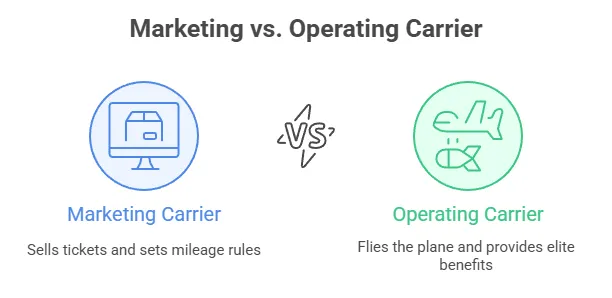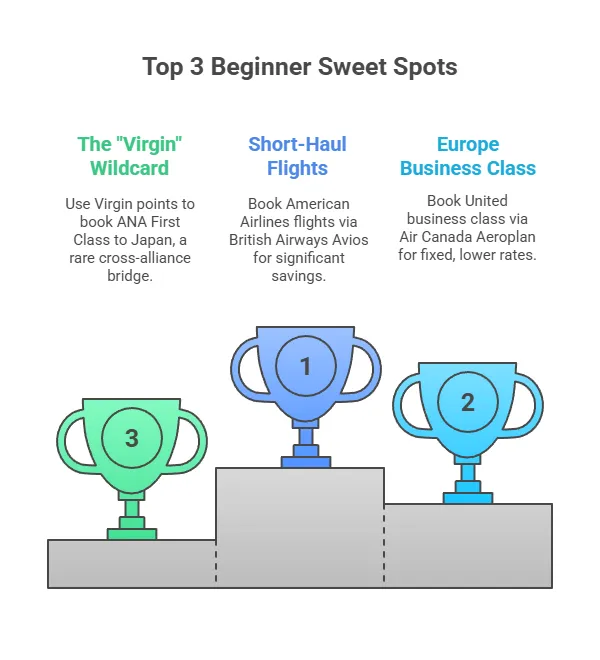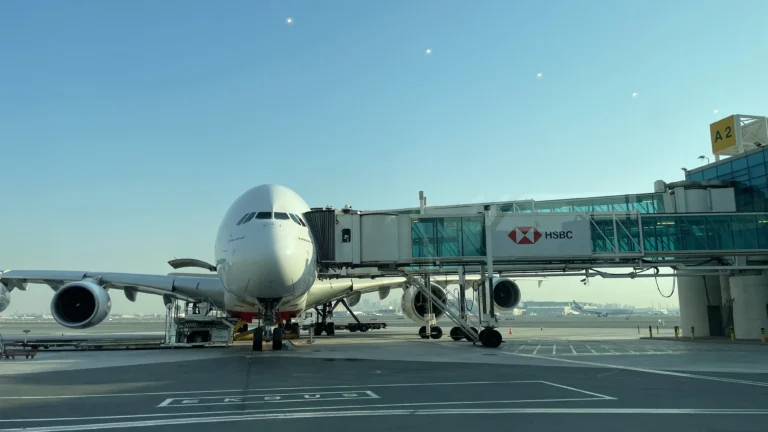On This Page
Beginner’s Guide to Airline Alliances and Partners
If you think of loyalty programs as independent silos, you are losing value. In the travel hacking world, airline alliances are the backend networks that allow us to arbitrage points—buying a ticket for pennies on the dollar by using the “wrong” currency for the “right” flight.
At its core, an alliance is a treaty of interoperability. It means United Airlines has agreed to honor your status even when you are boarding a Lufthansa jet in Frankfurt. It means your American Airlines miles are valid currency for a seat on Japan Airlines.
This guide isn’t just a list of members. It is the operating manual for using these networks to fly business class for economy prices.
The Big Three: A Comparative Analysis
There are three major “software systems” in the sky. Choosing a primary alliance is critical because your elite status generally only applies within one ecosystem.
| Alliance | Key US/Global Anchors | Best For… | Network Density |
|---|---|---|---|
| Star Alliance | United, Air Canada, Lufthansa, Singapore, ANA | Global Reach. If you need to get to a tiny airport in Thailand or Africa, Star Alliance likely goes there. | High (25+ Members) |
| Oneworld | American, Alaska, British Airways, Cathay Pacific, Qatar | Luxury & Status. Known for having the best top-tier elite benefits (Emerald status grants First Class lounge access). | Medium (13+ Members) |
| SkyTeam | Delta, Air France, KLM, Korean Air, Virgin Atlantic | Europe & Ease. Delta’s dynamic pricing is tough, but partners like Virgin and Air France offer great sweet spots. | Medium-High (19+ Members) |
The Mechanics: Marketing vs. Operating Carrier
To hack the system, you must understand one technical distinction that confuses 90% of beginners: the difference between who sells the ticket and who flies the plane.

1. Codeshare (The “Marketing” Illusion)
You go to United.com and buy a ticket from New York to Munich. The flight number is UA 8845. However, when you get to the gate, the plane is painted with the Lufthansa crane.
This is a codeshare. According to Wikipedia Codeshare Agreement, United is the “Marketing Carrier” (they took your money), but Lufthansa is the “Operating Carrier” (they own the metal).
Why it matters: You generally earn miles based on the marketing carrier’s rules, but you get elite benefits (lounge access, baggage) based on the operating carrier’s capabilities.
2. Interlining (The “One Ticket” Rule)
Alliances allow “interlining.” This means you can check a bag in Chicago with American Airlines, change planes in London to British Airways, and your bag will automatically transfer to the final destination. You don’t need to exit security and re-check in. This is the glue that makes multi-airline awards possible.
The “Sweet Spot” Algorithm: Earning vs. Redeeming
Here is the logic you need to memorize. This is the foundation of all award travel value.
The Arbitrage Rule
Earn in the program that gives you the best status or holds its value (e.g., Alaska, transferable credit card points).
Redeem via the partner that has the cheapest “Award Chart” for your specific route.
Example: Flying Qatar Airways (Oneworld)
- Booking via Qatar: Might cost 85,000 Avios + fees.
- Booking via American Airlines: Often costs 70,000 miles + $0 fees.
- The Product: You sit in the exact same seat (Qsuites), but you paid using a cheaper currency.
Top 3 Beginner Sweet Spots
You don’t need to be an expert to book these. They are reliable, high-value redemptions available right now.

1. Short-Haul Flights via British Airways (Oneworld)
The Play: American Airlines domestic flights can be expensive. However, British Airways uses a distance-based award chart.
The Math: A short flight (e.g., Miami to Nassau or NYC to Montreal) might cost $300 cash or 15,000 AA miles. But if you book that same AA flight using British Airways Avios, it can cost as little as 8,250 Avios. This is perfect for expensive, short hops.
2. Europe Business Class via Air Canada Aeroplan (Star Alliance)
The Play: United often charges dynamic prices (e.g., 200k miles) for their own business class.
The Math: Air Canada Aeroplan has a fixed partner chart. You can often book United, Swiss, or Lufthansa business class to Europe for a fixed rate of 60,000–70,000 points. Transfer Amex or Chase points to Aeroplan to lock this in.
3. The “Virgin” Wildcard (SkyTeam & Independent)
The Play: Virgin Atlantic is in SkyTeam but maintains independent partnerships.
The Math: You can use Virgin points to book ANA (a Star Alliance carrier) to Japan. While prices have risen, it remains one of the only ways to book ANA First Class without holding ANA miles. It’s a rare cross-alliance bridge.
Non-Alliance Partnerships
Not every airline joins a club. Some, like Emirates, Etihad, and JetBlue, are “free agents.” They form bilateral partnerships one-on-one.
I remember booking a JetBlue Mint flight to Dublin using Qatar Airways Avios. It felt like a glitch—JetBlue isn’t in Oneworld, but because they have a specific handshake deal with Qatar, I could use my accumulated Avios to fly a US carrier across the Atlantic.
Key Takeaway: Always check the specific partner list of your credit card points. You aren’t limited to just the big three alliances.
Common Mistakes / Gotchas
1. “Ghost Availability”
Just because United.com shows a flight doesn’t mean their partners can see it. Partners usually only get access to “Saver” level award space (the cheapest bucket). If you don’t see “Saver” or class “X” (economy) / “I” (business), your partner miles are useless.
2. The Transfer Trap
You cannot transfer miles between airlines. You cannot send United miles to Lufthansa. You can only use United miles to book Lufthansa. Once you move credit card points to an airline, they are stuck there.
3. Status Verification
If you are relying on status for lounge access (e.g., you are Delta Gold flying Air France), bring your physical or digital membership card. Systems sometimes fail to print your status on the partner boarding pass.
Methodology: How We Analyze Value
My valuation of these alliances is based on “CPM” (Cents Per Mile). To do this quickly, I run the flight details through a points vs cash calculator to see if the redemption yields >1.5 cents per point. If it hits >3.0 cents, it qualifies as a “Sweet Spot.”
Conclusion
Airline alliances turn the world’s fragmented aviation market into a single, exploitable network. The beginner books a flight on Delta.com with Delta miles. The pro checks if they can book that same Delta flight using Virgin Atlantic points for 30% less.
Start small. Pick one alliance where you have the most travel volume, learn their “sweet spot” partner, and execute one arbitrage booking. Once you fly business class for the price of economy, you’ll never go back.
Frequently Asked Questions
Can I transfer my American Airlines miles to British Airways?
No. This is the most common misconception. You cannot transfer miles between airlines. You can only use AA miles to book a flight on British Airways (and vice versa).
Which airline alliance is best for beginners?
Star Alliance is generally the easiest for beginners because it has the most members (25+), making it easiest to find award availability. Programs like United MileagePlus and Air Canada Aeroplan are very user-friendly.
Do I earn miles on codeshare flights?
Yes, but the earning rate is usually determined by the Marketing Carrier (the airline code on your ticket), not the airline that operates the plane. Always check the specific partner earning chart before booking.


